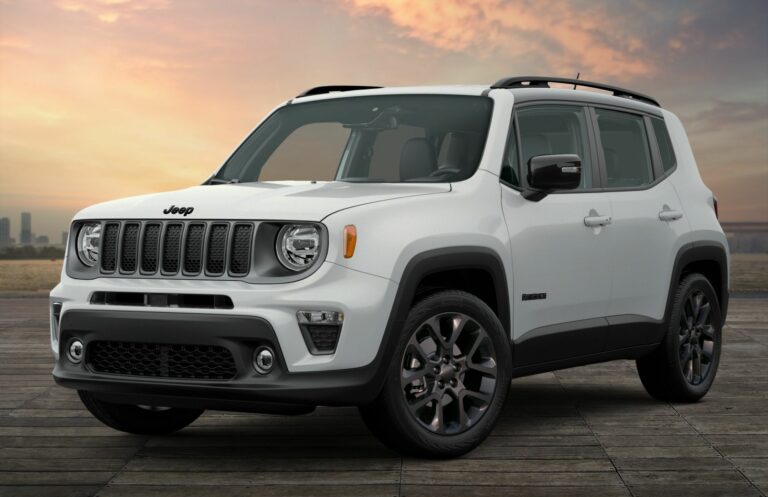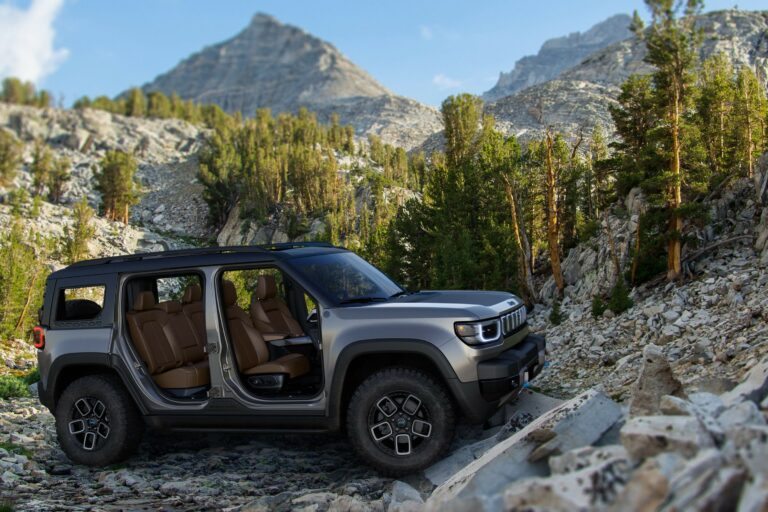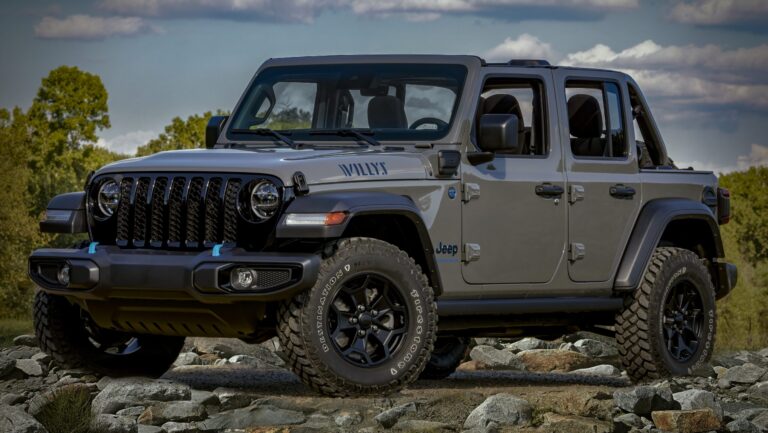99 Jeep Cherokee: The Enduring Legend of the XJ
99 Jeep Cherokee: The Enduring Legend of the XJ jeeps.truckstrend.com
The year 1999 holds a special place in the hearts of Jeep enthusiasts, marking the final production year of the iconic Jeep Cherokee XJ in North America. More than just another SUV, the 1999 Jeep Cherokee represents the culmination of a revolutionary design that blended the rugged capability of a traditional Jeep with the practicality and comfort of a family vehicle. It was the last iteration of a model that pioneered the unibody SUV concept, setting a benchmark for others to follow. Today, the ’99 XJ is not merely an old car; it’s a cult classic, celebrated for its legendary reliability, unparalleled off-road prowess, simple mechanics, and timeless, boxy aesthetic. For many, it’s the quintessential Jeep – a versatile workhorse equally at home on city streets, muddy trails, or rocky mountain passes. This comprehensive guide will delve into what makes the 1999 Jeep Cherokee such an enduring and sought-after vehicle, offering insights for owners, prospective buyers, and admirers alike.
A Legacy of Rugged Simplicity: Why the ’99 XJ Stands Out
99 Jeep Cherokee: The Enduring Legend of the XJ
The Jeep Cherokee XJ first debuted in 1984, fundamentally changing the SUV landscape with its innovative unibody (monocoque) construction. This design offered a lighter, more rigid chassis compared to traditional body-on-frame SUVs, leading to better handling and fuel efficiency without sacrificing significant off-road capability. By 1999, the XJ had undergone several refinements, culminating in a model that combined proven mechanicals with improved interior ergonomics and safety features.
What truly sets the ’99 XJ apart is its perfect blend of simplicity and ruggedness. Unlike many modern SUVs laden with complex electronics, the XJ is refreshingly straightforward, making it easier to maintain and repair for the average enthusiast. Its relatively compact size, excellent visibility, and tight turning radius contribute to its surprising agility, both on and off the pavement. The 1999 model year benefited from years of iterative improvements, making it one of the most refined and reliable XJs ever produced, truly the pinnacle of its generation before the nameplate transitioned to the less popular, rounded KJ generation in 2002.
Under the Hood: Powertrains and Performance
The heart of the 1999 Jeep Cherokee, and arguably the secret to its longevity, is the 4.0-liter inline-six (I6) engine. This legendary powerplant, designated the AMC 4.0L, is renowned for its incredible durability, ample low-end torque, and relatively simple design. Producing 190 horsepower and 225 lb-ft of torque, it provides more than enough grunt for daily driving, towing small loads, and conquering challenging off-road obstacles. Its robust construction means it’s not uncommon to find 4.0L engines still running strong past 200,000 or even 300,000 miles with proper maintenance.
Mated to the 4.0L were two primary transmission options:
- Aisin-Warner AW4 Automatic Transmission: This four-speed automatic is highly regarded for its reliability and smooth shifting. It’s robust enough to handle the 4.0L’s torque and is a popular choice for both daily driving and off-roading.
- New Venture Gear NV3550 Manual Transmission: While less common in 1999, some XJs were still equipped with this five-speed manual. It offers more direct control and can be preferred by enthusiasts for a more engaging driving experience, though its availability was limited by this point.

For four-wheel drive models, two transfer cases were offered:
- New Process NP231 Command-Trac: A part-time 4WD system, meaning it should only be used in 4WD on loose surfaces (dirt, snow, mud) to prevent driveline bind. It’s incredibly strong and popular for dedicated off-road builds.
- New Process NP242 Select-Trac: A full-time 4WD system that can be used on any surface, including dry pavement, thanks to a differential within the transfer case. It also offers a part-time 4WD high range and 4WD low range, making it a more versatile option for varying conditions.

Off-Road Prowess and Everyday Practicality
The 1999 Jeep Cherokee truly shines in its dual personality. Its relatively short wheelbase, solid front and rear axles (Dana 30 front, Chrysler 8.25 or Dana 35 rear), and excellent approach/departure angles make it an incredibly capable off-road machine right out of the factory. With minimal modifications, an XJ can tackle trails that would leave many modern SUVs stranded. The robust drivetrain, ample ground clearance, and strong chassis allow it to articulate over obstacles with ease, making it a favorite among rock crawlers and trail enthusiasts.
Beyond its trail capabilities, the ’99 XJ also serves as a surprisingly practical daily driver. Its compact footprint makes it easy to maneuver and park in urban environments. The unibody construction contributes to a more comfortable ride than many traditional body-on-frame SUVs of its era. Inside, the XJ offers a utilitarian yet functional cabin. While not luxurious, the seats are reasonably comfortable, and there’s ample cargo space with the rear seats folded down, making it suitable for hauling gear, groceries, or even camping equipment. Fuel economy, while not stellar by modern standards (typically 15-20 MPG combined), is acceptable for a rugged SUV of its age.
Common Issues and Maintenance Tips

Despite its legendary reliability, the 1999 Jeep Cherokee is still a vehicle that’s over two decades old, and certain issues are common. Proactive maintenance is key to keeping an XJ running strong:
- Cooling System: This is arguably the XJ’s biggest weak point. Overheating is common due to aging radiators, water pumps, thermostats, fan clutches, and hoses. A complete cooling system overhaul (new radiator, water pump, thermostat, fan clutch, hoses, and a thorough flush) is highly recommended for any new-to-you XJ.
- Rust: Especially in salt-belt regions, rust is a major concern. Check the rocker panels, floorboards, frame rails (especially near the unibody stiffeners), and rear quarter panels. Surface rust is common, but through-rust indicates more serious problems.
- Electrical Gremlins: Aging wiring and sensors can lead to issues with power windows, door locks, gauge clusters, and various engine sensors (e.g., Crankshaft Position Sensor).
- Driveline Vibrations: Often caused by worn U-joints, driveshaft angles after a lift, or worn transmission/transfer case mounts.
- Rear Leaf Springs: Over time, the rear leaf springs tend to sag, especially if the vehicle has carried heavy loads. This leads to a "squatted" appearance and can negatively impact ride quality and suspension travel.
- Oil Leaks: The 4.0L engine is known for minor oil leaks, particularly from the rear main seal or valve cover gasket. While often not critical, they should be monitored.
Maintenance Tips:
- Regular Fluid Changes: Engine oil, transmission fluid, transfer case fluid, and differential fluids should be changed according to schedule.
- Cooling System Vigilance: Keep an eye on coolant levels and temperature gauge. Address any signs of overheating immediately.
- Rust Prevention: Wash the underside regularly, especially after driving on salted roads. Consider undercoating or rust-inhibiting treatments.
- Suspension Inspection: Check bushings, ball joints, and tie rod ends periodically for wear.
- Listen for Noises: Pay attention to unusual engine noises, driveline clunks, or suspension squeaks.
Modifying Your ’99 XJ: Enhancing Capability
One of the most appealing aspects of the 1999 Jeep Cherokee is its vast aftermarket support and ease of modification. Whether you’re aiming for a mild trail rig or an extreme rock crawler, the XJ provides an excellent platform.
Popular Modifications Include:
- Lift Kits: Ranging from 2-inch budget boosts to 6.5-inch long-arm systems, lifts provide increased ground clearance and allow for larger tires.
- Larger Tires: Crucial for off-road performance, increasing ground clearance and traction. Ensure proper tire size for your lift and gearing.
- Heavy-Duty Bumpers and Winches: Protect the front and rear, and provide recovery points for off-road situations.
- Skid Plates: Protect vital components like the oil pan, transfer case, and fuel tank from trail damage.
- Lockers: Front and/or rear differential lockers significantly improve traction in challenging terrain by ensuring both wheels on an axle receive power.
- Rock Sliders: Protect the rocker panels from damage when traversing rocky obstacles.
- Gearing Changes: For larger tires, re-gearing the differentials is often necessary to restore power and maintain drivability.
When modifying an XJ, it’s wise to start with sensible upgrades that match your intended use. Prioritize reliability and safety. Consult experienced XJ owners and reputable off-road shops for advice.
Buying a ’99 Jeep Cherokee: What to Look For
Purchasing a 1999 Jeep Cherokee today requires a keen eye and realistic expectations. Here’s a checklist for prospective buyers:
- Rust, Rust, Rust: This is paramount. Inspect the rocker panels, floorboards (from inside and underneath), frame rails, rear quarter panels, and subframe connectors (if installed). Surface rust is common; severe rust is a deal-breaker.
- Engine Health: Listen for knocking, ticking, or excessive smoke from the exhaust. Check the oil for signs of coolant or sludge. Look for leaks. A compression test can reveal engine health.
- Cooling System: Ask about recent cooling system work. Look for a clean radiator, new hoses, and no signs of overheating (e.g., discolored coolant reservoir).
- Transmission: Check fluid color and smell. Test drive to ensure smooth shifts in all gears (both automatic and manual). For automatics, ensure it doesn’t "flare" between shifts.
- 4×4 System: Engage 4WD (high and low) to ensure the transfer case shifts smoothly and the system engages without grinding.
- Suspension: Look for sagging rear leaf springs. Check for worn bushings, ball joints, and tie rods (excessive play in the steering wheel can be a sign).
- Electricals: Test all lights, power windows, door locks, wipers, and the HVAC system.
- Driveline: Listen for clunks, vibrations, or humming noises, which could indicate worn U-joints, driveshafts, or differentials.
- Maintenance Records: A well-documented service history is a huge plus.
- Modifications: Be wary of poorly executed modifications. A mild, well-done lift is usually fine; extreme, cheap, or incomplete mods can indicate potential problems.
Remember, even a well-maintained ’99 XJ will have some quirks. The goal is to find one that has been cared for and doesn’t have major underlying issues that would require immediate, costly repairs.
Concluding Summary
The 1999 Jeep Cherokee stands as a testament to practical engineering and enduring design. As the last of the legendary XJ generation, it embodies a unique blend of rugged capability, simple mechanics, and surprising everyday usability. Its robust 4.0L engine, versatile drivetrain options, and unibody construction have cemented its status as a highly sought-after classic. Whether you’re an off-road enthusiast, a classic SUV collector, or simply someone seeking a reliable and characterful vehicle, the ’99 XJ offers an unparalleled experience. With proper care and attention, this timeless machine will continue to deliver adventure and reliability for years to come, proving that sometimes, the best things truly are built to last.
99 Jeep Cherokee: Estimated Price Table
Please note: Prices for a 1999 Jeep Cherokee vary significantly based on geographic location, overall condition, mileage, maintenance history, and specific trim level (Sport, Limited, Classic). This table provides estimated ranges for stock vehicles. Modified vehicles can command higher prices depending on the quality and extent of modifications.
| Condition Category | Estimated Price Range (USD) | What to Expect |
|---|---|---|
| Poor | $1,000 – $3,000 | Significant rust, mechanical issues (engine/transmission), high mileage, neglected maintenance, likely needs major repairs or is a parts vehicle. |
| Fair | $3,000 – $6,000 | Visible rust (surface or minor perforation), some mechanical issues needing attention (e.g., cooling system, suspension components), high mileage, rough interior/exterior. Drives but needs work. |
| Good | $6,000 – $10,000 | Minimal rust, mechanically sound (may have minor leaks or common XJ quirks), well-maintained 4.0L engine, average mileage (150k-250k), decent interior/exterior with minor wear. Good daily driver potential. |
| Excellent | $10,000 – $20,000+ | Very little to no rust, meticulously maintained with records, strong engine and transmission, lower mileage (under 150k), pristine interior and exterior. Often a rare find or a carefully restored example. |
Disclaimer: These are general estimates. Always conduct a thorough pre-purchase inspection by a qualified mechanic before buying.
Frequently Asked Questions (FAQ) about the 99 Jeep Cherokee
Q1: Is the 4.0L engine in the 1999 Jeep Cherokee reliable?
A1: Absolutely. The AMC 4.0L inline-six engine is legendary for its reliability and longevity. With proper maintenance, it’s common for these engines to exceed 200,000 or even 300,000 miles. Its main "weakness" is often the cooling system components around it, not the engine block itself.
Q2: What are the common rust spots on a ’99 XJ?
A2: The most common rust spots are the rocker panels (below the doors), the floorboards (especially where the unibody stiffeners attach), the rear quarter panels behind the rear wheels, and sometimes the frame rails themselves. Always inspect these areas thoroughly.
Q3: Is the 1999 Jeep Cherokee good for daily driving?
A3: Yes, it can be. Its relatively compact size, decent visibility, and robust build make it a practical daily driver. However, remember it’s an older vehicle; expect a firmer ride than modern SUVs, and fuel economy will be lower (typically 15-20 MPG).
Q4: Which transfer case is better: NP231 Command-Trac or NP242 Select-Trac?
A4: It depends on your needs. The NP231 (part-time 4WD) is simpler and very robust, ideal if you’re primarily off-roading on loose surfaces. The NP242 (full-time 4WD) is more versatile, allowing you to use 4WD on pavement as well as off-road, making it better for varying weather conditions or mixed driving.
Q5: What should I look for when buying a ’99 Jeep Cherokee?
A5: Prioritize rust-free examples, especially in critical areas. Check the engine for signs of neglect or major leaks. Test the transmission for smooth shifting and the 4WD system for proper engagement. Inspect the cooling system components and suspension for wear. Always ask for maintenance records and consider a pre-purchase inspection by a mechanic familiar with XJs.
Q6: How much does it cost to lift a Jeep Cherokee XJ?
A6: The cost can vary widely. A basic 2-3 inch lift kit (spacers and shackles/add-a-leafs) might cost $300-$600 for parts. A more comprehensive 3-4.5 inch lift with new leaf springs, coil springs, and shocks can range from $800-$1,500. More advanced 5-6.5 inch long-arm kits with adjustable control arms and other components can easily run $2,000-$4,000+ for parts alone, plus installation costs. Don’t forget the potential need for new driveshafts, slip yoke eliminators, and re-gearing for larger lifts and tires, adding significant cost.





